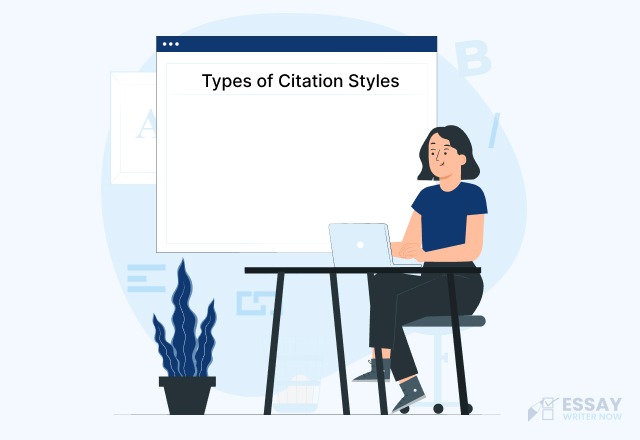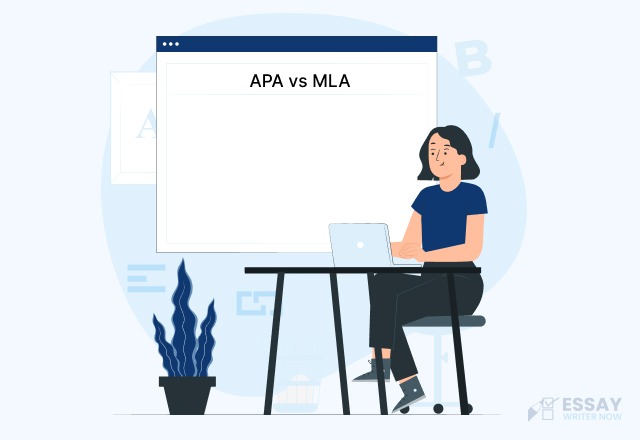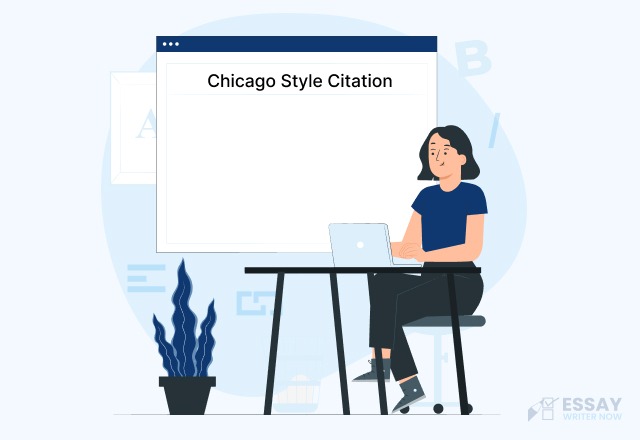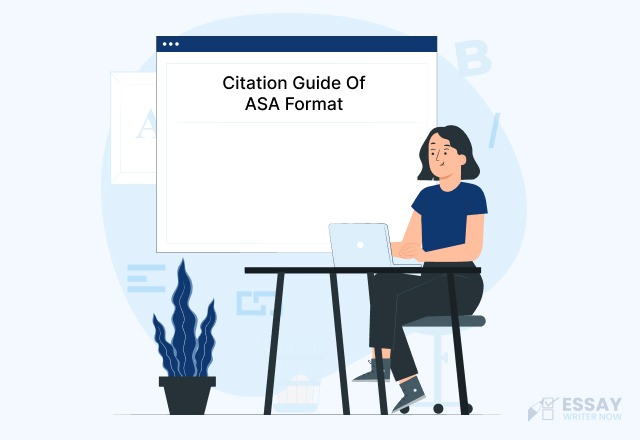Understanding Citation Styles
A citation style is a set of rules for how to cite sources in academic writing. These rules dictate how to format citations in the text and in the reference list or bibliography. Using the correct citation style is essential to maintain academic integrity and avoid plagiarism. Each citation style has specific guidelines on how to cite different types of sources, such as books, journal articles, websites, and more.
Key Components of Citation Styles
- In-Text Citations: These are brief citations within the body of your work. They usually include the author's last name and the publication year or a number that corresponds to a full reference entry. In-text citations allow readers to see where specific information came from without interrupting the flow of the text.
- Reference List/Bibliography: This is a comprehensive list of all sources cited in your work. Each entry provides full details about the source, such as the author's name, publication date, title, and where it was published. The format of these entries varies depending on the citation style.
Why Citation Styles Matter
Using the correct citation style is important for several reasons:
- Academic Integrity: Proper citations give credit to the original authors and show that you have conducted thorough research.
- Avoiding Plagiarism: Citing your sources properly helps you avoid plagiarism, which is a serious academic offense.
- Clarity and Consistency: Citation styles provide a consistent method for documenting sources, making it easier for readers to understand your references.
- Professionalism: Properly cited work looks professional and credible, which is crucial in academic and professional writing.
Types of Citation Styles
Citation styles fall into three main categories based on how citations are presented in the text:
1. Parenthetical Citations
Parenthetical citations involve including brief information about a source within parentheses in the text, typically the author's last name and the publication year. This style is commonly used in fields like humanities and social sciences.
Example in APA Format:
| In-text citation: (Smith, 2020) |
| Reference Entry: Smith, J. (2020). The Art of Academic Writing. Academic Press. https://doi.org/10.1234/5678 |
Example in MLA Format:
| In-text citation: (Brown 45) |
| Works Cited Entry: Brown, A. The Elements of Style. Oxford University Press, 2018. |
2. Numerical Citations
Numerical citations involve assigning a number to each source cited in the text, which corresponds to a full reference in a numbered list at the end of the document. This style is often used in scientific and technical fields.
Example in IEEE Citation:
| In-text citation: [1] |
| Reference Entry: [1] M. Davis, "Data Analysis Techniques," IEEE Transactions on Computers, vol. 20, no. 5, pp. 101-105, May 2021. https://doi.org/10.1109/TC.2021.1234567 |
Example in AMA Format:
| In-text citation: 1 |
Reference Entry:
|
3. Note Citations
Note citations involve placing full citations in footnotes or endnotes, with a corresponding number or symbol in the text to indicate where the information is sourced from. This style is common in fields like history and law.
Example in Chicago Style (Notes and Bibliography):
| Footnote citation:1 |
Bibliography Entry:
|
Example in OSCOLA Style:
| Footnote citation:^1 |
Bibliography Entry:
|
Choosing the Right Citation Style
Your choice of citation style is often determined by your university, department, or instructor. If you’re not sure which style to use, check your institution’s guidelines or ask your instructor. Here are some typical citation styles by discipline:
Discipline | Typical Citation Style(s) |
Economics | |
Engineering & IT | |
Humanities | |
Law | Bluebook; OSCOLA |
Medicine | AMA; NLM; Vancouver |
Political Science | |
Psychology | |
Sciences | ACS; Chicago Style Author-Date |
Social Sciences |
How To Select The Right Citation Style
Selecting the right citation style is crucial in academic writing as it ensures that your sources are properly credited and your work meets the standards of your field. Here’s a guide on how to choose the appropriate citation style:
1. Consult Assignment Guidelines or Publication Requirements
University or Instructor Requirements: Most academic institutions or specific courses will have guidelines specifying which citation style to use. Always follow these requirements to ensure compliance with academic standards.
Journal Requirements: If you are submitting a manuscript for publication, journals often have specific style guidelines. Check the author instructions or guidelines provided by the journal to determine which citation style to use.
2. Consider Your Field of Study
Disciplinary Norms: Different academic disciplines often prefer particular citation styles. For example, APA style is commonly used in psychology and social sciences, while MLA style is prevalent in humanities and literature. Understanding the conventions of your field will help you select the appropriate style.
3. Audience and Readership
Reader Expectations: Consider the expectations of your audience. If you are writing for a specialized audience or a particular community within your field, using the preferred citation style can enhance readability and credibility.
4. Nature of Sources
Types of Sources: Certain citation styles are better suited for specific types of sources. For instance, APA and MLA styles are adept at citing journal articles and books, while IEEE is well-suited for technical reports and engineering papers.
Formatting the Reference List
Formatting the reference list or bibliography correctly is essential in academic writing to provide readers with complete information about your sources. Here are further tips and examples to help you format your reference list effectively:
Tips for Formatting the Reference List
- Consistency: Maintain consistent formatting throughout the reference list. This includes using the same punctuation, capitalization, and italics as required by the chosen citation style.
- Order: Arrange entries alphabetically by the author's last name for citation styles that use author-date or note citations (e.g., APA, MLA, Chicago notes and bibliography). For numerical citation styles (e.g., IEEE, AMA), arrange entries numerically according to the order they appear in the text.
- Details: Include all necessary information for each source:
- Books: Author(s), title of the book in italics or underlined, publisher, publication year, and edition (if applicable).
- Journal Articles: Author(s), title of the article, journal name in italics, volume number, issue number (if applicable), page range, and DOI or URL (if available).
- Websites: Author(s) or organization, title of the webpage or document, URL, and access date (for APA and MLA styles).
- Formatting Specifics: Pay attention to specific formatting requirements of the citation style:
- APA style requires the use of hanging indents for second and subsequent lines of each reference.
- MLA style does not use a separate title page for the bibliography but starts on a new page with the title "Works Cited" centered at the top.
Examples of Well-Formatted Reference Entries
APA Style:
| Book: Smith, J. (2020). The Art of Academic Writing. Academic Press. https://doi.org/10.1234/5678 |
| Journal Article: Brown, A. (2018). Reading in bed with Troilus and Criseyde. The Chaucer Review, 55(2), 147-170. https://doi.org/10.5325/chaucerrev.55.2.0147 |
MLA Style:
| Book: Brown, A. The Elements of Style. Oxford University Press, 2018. |
| Journal Article: Davidson, C. (2020). Reading in bed with Troilus and Criseyde. The Chaucer Review, vol. 55, no. 2, Apr. 2020, pp. 147-170. https://doi.org/10.5325/chaucerrev.55.2.0147 |
Chicago Style (Author-Date):
| Book: Smith, J. 2020. The Art of Academic Writing. Academic Press. |
| Journal Article: Brown, A. 2018. "Reading in bed with Troilus and Criseyde." The Chaucer Review 55, no. 2 (April): 147-170. https://doi.org/10.5325/chaucerrev.55.2.0147 |
IEEE Style:
| Book: [1] M. Davis, "Data Analysis Techniques," IEEE Transactions on Computers, vol. 20, no. 5, pp. 101-105, May 2021. https://doi.org/10.1109/TC.2021.1234567 |
| Journal Article: [1] M. Davis, "Data Analysis Techniques," IEEE Transactions on Computers, vol. 20, no. 5, pp. 101-105, May 2021. https://doi.org/10.1109/TC.2021.1234567 |
In conclusion, correctly formatting your reference list is crucial in academic writing. It ensures that your sources are clearly presented and properly credited, which is essential for maintaining academic integrity.
By following the specific guidelines of your chosen citation style you can create a reference list that is consistent, organized, and easy to follow. This not only helps readers locate your sources but also demonstrates your attention to detail and commitment to scholarly standards.
Always double-check your formatting to ensure it aligns with the requirements of your assignment or publication, helping to strengthen the overall quality of your research paper or article.








